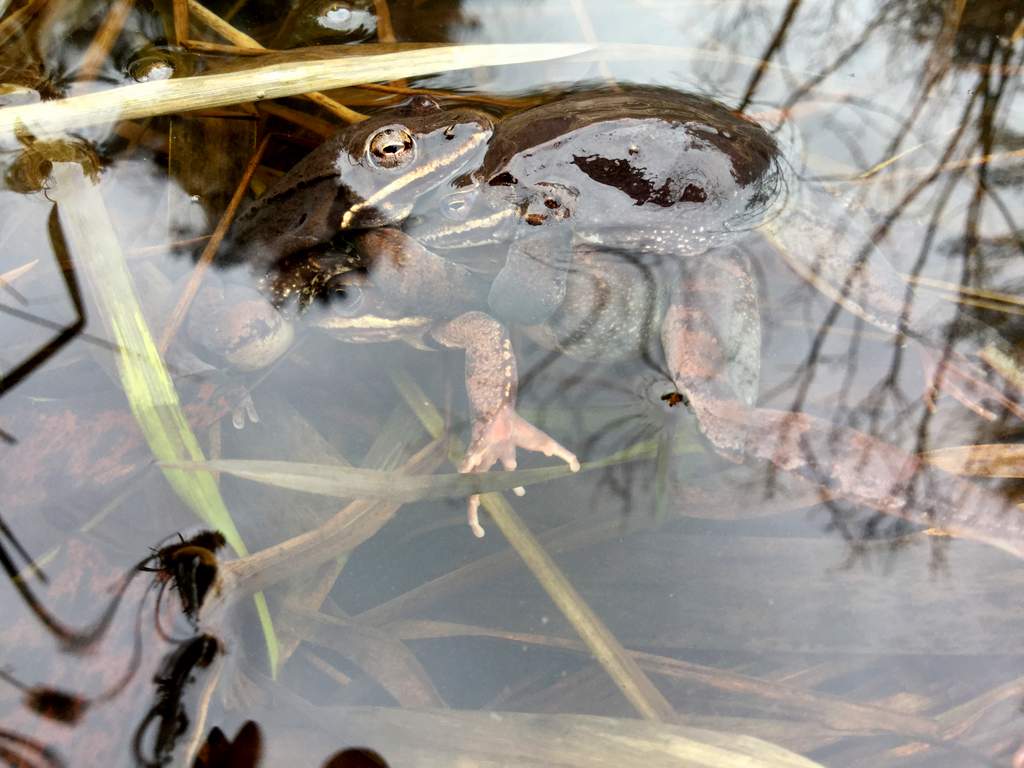
A male and a female in amplexus, with a second male (top left) trying to ingratiate himself into the embrace (Potash Brook, South Burlington)
The sounds of spring: Peeps and Quacks
Two nights ago was amazing for watching the amphibians in migration and yesterday, with many of the wood frogs and spring peepers now at their breeding grounds, the males went to work setting up shop, while the females appraised their options. I wrote about the skewed sex ratios and enlarged thumbs of the male wood frogs, and with the frogs breeding you can see the use of those powerful gripping thumbs. In the image above there are two males, one on the top right with his thumbs firmly locked around the female. The other, to the top left, is trying to sneak his way in. You can see them tussle about in the video below. Like virtually all frogs, fertilization is external, with the male timing the release of his sperm as the female releases her eggs. So just because the one male has the thumbs to hang on, it doesn’t necessarily mean that he’ll be the one to fertilize all of the eggs. It’d be interesting to see a paternity test of a cluster of eggs to see if they all wind up getting fertilized by the same male.
Where to go:Â You can just drive around with your windows down to find breeding sites. You can also look for cattails, seeps, vernal pools, or other small patches of water that don’t look like good habitat for fish or dragonflies. My CCV Natural History of Vermont course heard wood frogs quacking down along Potash Brook in East Woods (and then we spotted them in very small patches of water mixed in between cattails. For my run I headed into Colchester to Gillbrook and then Sunny Hollow; both were just alive with the sounds of male peepers and wood frogs. It was an incredible backdrop to a great run. Temperatures are dropping so things will calm down a bit over the weekend, but pick up as it gets back up above 40 next week.



